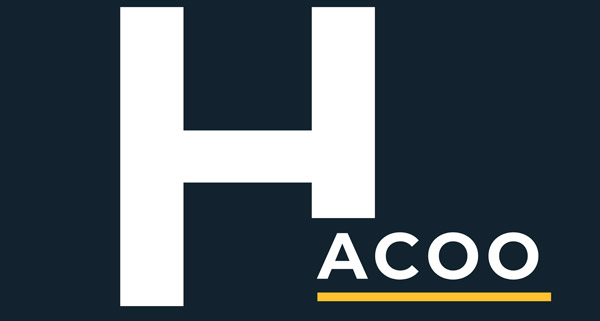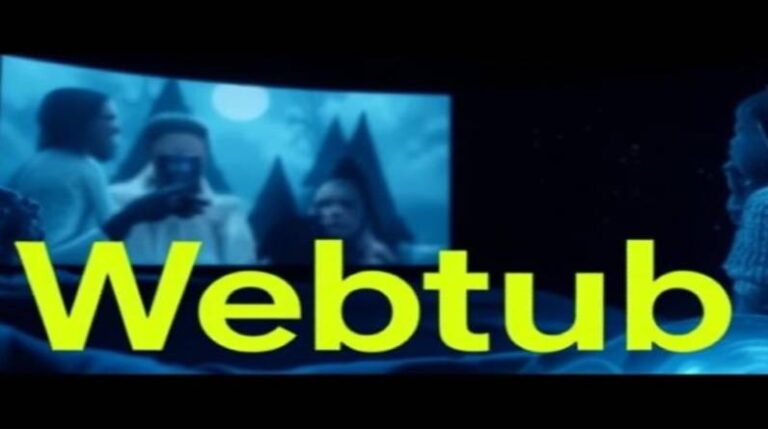In an era where content consumption dominates digital life, a new wave of innovation is reshaping how people watch, share, and create online videos. Webtub is at the forefront of this movement — a hybrid platform that blends the best of streaming, community engagement, and open-source web technology. What began as a promising Android app and web project has grown into a vision for the future of interactive entertainment.
What Is Webtub?
Webtub is a modern multimedia streaming and sharing ecosystem designed to deliver flexibility, personalization, and creative empowerment. Available primarily for Android and through its evolving web interface, Webtub combines the capabilities of traditional streaming services with the participatory energy of video-sharing communities. Unlike older, ad-saturated platforms, Webtub focuses on a seamless experience — integrating HD playback, offline viewing, custom playlists, and even a social layer that allows users to comment, like, and share content in real time. From entertainment seekers to digital storytellers and developers experimenting with media technologies, Webtub represents an inclusive, next-generation platform that adapts to all audiences.
Key Features That Define Webtub
1. Extensive Multimedia Library
Webtub offers a vast catalog of content across genres — from films and vlogs to podcasts and live streams. The platform’s smart recommendation system learns user preferences and curates content accordingly, ensuring a highly personalized experience.
2. Offline and High-Definition Streaming
Users can download videos for offline viewing and enjoy buffer-free playback in HD quality. This dual capability addresses two critical user demands: convenience and performance.
3. Intuitive Interface and Navigation
Inspired by the simplicity of YouTube but refined with modern UX design, Webtub’s interface emphasizes accessibility. Minimal menus, clean typography, and quick-load architecture powered by tools like React and Vite create a frictionless browsing experience.
4. Cross-Platform Flexibility
While Webtub began as an Android app, its web application — often called Webtube in developer circles — demonstrates the platform’s adaptability. Built with TypeScript, Tailwind CSS, and PostCSS, it supports scalable performance across devices and browsers.
5. Creator Tools and Analytics
Webtub doesn’t just serve viewers — it empowers creators. The built-in analytics dashboard helps content producers monitor viewer engagement, demographics, and growth patterns. Monetization models include ad revenue, subscriptions, and fan donations, diversifying income options for creators at all levels.
Webtub vs Other Streaming Platforms
| Feature | Webtub | Traditional Streaming Apps | Video Sharing Sites |
| Offline Access | ✔ Available | Limited or Paid | Rare |
| Ad Experience | Minimal / Optional | Frequent | Moderate to High |
| Monetization for Creators | Multiple streams (ads, subs, donations) | Mostly ad-based | Mostly ad-based |
| Community Engagement | Built-in comments, likes, shares | Minimal | Moderate |
| Customization & Playlists | Advanced options | Basic | Moderate |
| Open-Source Technology | React, TypeScript, Tailwind | Proprietary | Proprietary |
Unlike platforms that lock users into paywalls or force ads, Webtub balances accessibility with creator support. Its open-source development ethos allows for continuous innovation without sacrificing usability.
How Webtub Empowers Creators
A Platform Built for Growth
Creators can upload and manage both short-form and long-form videos without restrictive algorithms. The focus is on authentic connection rather than clickbait optimization. As a result, niche creators — from travel vloggers to educators — can find and cultivate loyal audiences more easily.
Diverse Revenue Models
Webtub’s subscription tiers and donation systems enable direct viewer support. This approach mirrors trends in creator economies where fans prefer to back favorite channels rather than rely on intrusive advertising.
Data-Driven Decision-Making
The advanced analytics dashboard provides insights on engagement rates, watch time, and retention curves — helping creators refine their strategies. For example, a musician can measure how long listeners stay engaged during live performances and adjust future content accordingly.
User Experience: Designed Around People, Not Algorithms
One of Webtub’s defining strengths is its focus on the human side of streaming. Instead of overwhelming users with endless recommendations, it uses intelligent curation and community-driven discovery. Viewers can explore trending categories, interact with creators, and even share playlists with friends. Constructive comment moderation tools ensure positive interaction, creating a more enjoyable environment than many social video apps plagued by spam or toxicity. The mobile-friendly design also means users can start watching on a phone and seamlessly continue on a laptop, highlighting Webtub’s cross-platform consistency.
Behind the Scenes: The Technology Powering Webtub
At its core, Webtub showcases what’s possible when modern web development meets entertainment. The project integrates:
- React for modular user interfaces
- Vite for lightning-fast build times
- TypeScript for clean, scalable code
- Tailwind CSS for elegant, responsive styling
- Lucide React for SVG icons and consistent design language
- ESLint & PostCSS for code quality and CSS processing
This technical backbone ensures speed, reliability, and scalability, making Webtub attractive not only to users but also to developers who wish to build upon or customize its open architecture.
Emerging Trends and the Future of Webtub
- Rise of Niche Creators: Webtub’s algorithm favors relevance over popularity, allowing specialized channels — from indie filmmakers to tech educators — to gain traction.
- AI-Driven Recommendations: With machine learning integration on the roadmap, users will receive smarter, more context-aware content suggestions.
- Interactive Live Streaming: Future updates aim to enhance live engagement with chat, reactions, and tipping tools, turning viewing into a two-way experience.
- Collaborative Ecosystem: As more developers join the open-source Webtube project, expect community-built plugins, theme customization, and API extensions.
- Sustainable Monetization: The premium subscription model (ad-free, HD, offline) ensures stable revenue while keeping the base app free — balancing growth and inclusivity.
Case Example: How Webtub Benefits Different Users
| User Type | Use Case | Key Benefit |
| Casual Viewer | Streams movies and podcasts offline | Access to entertainment anywhere |
| Content Creator | Uploads tutorials or vlogs | Multiple monetization paths |
| Developer | Experiments with open-source Webtube project | Hands-on learning in modern frameworks |
| Student | Uses playlists for educational content | Personalized, distraction-free study tool |
Example: A travel vlogger using Webtub can create a series, analyze viewer engagement using in-app analytics, accept fan donations, and then repurpose those insights into improved future videos — all without leaving the platform.
Troubleshooting and Community Support
Webtub maintains community forums and social channels where users exchange tips and troubleshoot issues collaboratively. Common solutions include clearing cache to fix loading errors, updating to the latest version for smoother playback, or reinstalling the app from trusted sources to resolve bugs. This community-driven support system reinforces Webtub’s image as an inclusive, responsive ecosystem rather than a closed corporate product.
Why Webtub Represents the Future of Online Entertainment
Webtub bridges the gap between traditional streaming and open digital collaboration. By combining a creator-friendly economy with a developer-friendly framework, it sets a precedent for the next generation of video platforms — transparent, inclusive, and adaptive. In an industry where major players dominate through closed ecosystems, Webtub offers an alternative: a platform built on community feedback, technological innovation, and creative freedom. Whether you’re a viewer, creator, or coder, Webtub isn’t just an app — it’s a growing movement redefining how we connect through visual media.
Conclusion
From its intuitive Android app to its open-source web project, Webtub exemplifies how technology and creativity can coexist harmoniously. It offers an accessible yet powerful alternative to traditional streaming platforms — one where personalization, freedom, and collaboration shape the future of online entertainment. As more users join its expanding ecosystem, Webtub’s vision becomes clearer: a world where everyone can watch, create, and contribute without barriers. If you’re looking for the next big platform that values community, performance, and innovation equally, Webtub deserves a place on your screen — and in your imagination.
Frequently Asked Questions (FAQs)
- What is Webtub?
Webtub is a modern video streaming and sharing platform that combines high-quality playback, offline access, creator monetization, and community engagement. It offers a seamless experience for both viewers and content creators. - How is Webtub different from YouTube or other video apps?
Unlike traditional platforms, Webtub emphasizes user control, minimal ads, and open-source innovation. It allows creators to earn through multiple channels while offering viewers a clutter-free, personalized experience. - Is Webtub free to use?
Yes, Webtub is free to use, with optional premium features such as ad-free viewing, HD streaming, and exclusive content access through subscription tiers. - Can I upload my own videos on Webtub?
Absolutely. Webtub provides creator tools for uploading, organizing, and monetizing content. You can also analyze your audience through the built-in analytics dashboard. - What technologies power Webtub?
The platform’s web version is built using React, TypeScript, Tailwind CSS, and Vite, ensuring fast, scalable performance and a modern, responsive interface. - Is there a Webtub app for mobile devices?
Yes, Webtub is available for Android, offering smooth streaming, offline viewing, and social interaction features similar to the web version. - How does Webtub support creators financially?
Webtub offers multiple monetization options including ad revenue, subscriptions, and fan donations — empowering creators to earn based on engagement and loyalty. - Is Webtub an open-source project?
Yes, the Webtube (web) version of Webtub is open-source, allowing developers to contribute, modify, and expand its functionality for continuous improvement. - What kind of content can I find on Webtub?
Webtub hosts a diverse library of entertainment, education, music, gaming, and lifestyle videos — catering to both mainstream audiences and niche communities. - What’s next for Webtub?
Future updates will include AI-driven recommendations, interactive live streaming, and enhanced creator tools — making Webtub one of the most innovative streaming ecosystems online.
For more insightful articles and the latest updates, keep visiting Hacoo.

